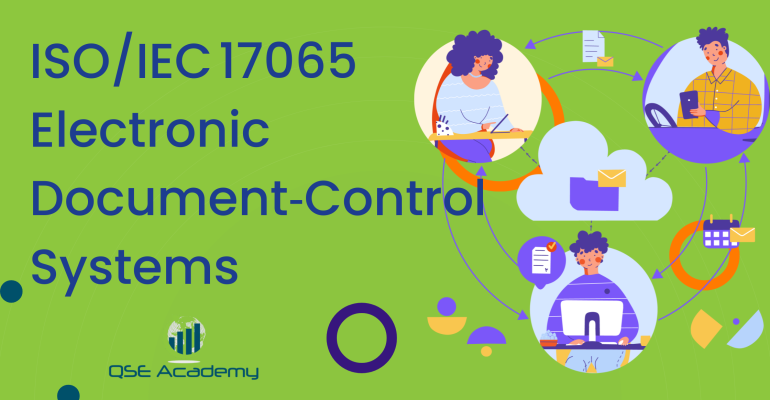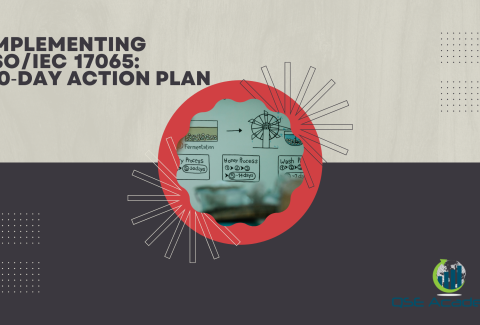ISO/IEC 17065 Electronic Document‑Control Systems
Why Electronic Document-Control Systems Matter in ISO/IEC 17065 Certification Bodies
In certification work, your credibility depends on controlled, traceable, and secure documentation. Over the years, I’ve helped Certification Bodies move from scattered folders and manual spreadsheets to complete electronic document-control systems designed specifically for ISO/IEC 17065. The difference is immediate: fewer errors, stronger traceability, and far fewer nonconformities during accreditation.
ISO/IEC 17065 expects documentation to be consistent, controlled, confidential, and accessible. That includes procedures, evaluation records, sampling forms, test reports, decision logs, complaints, appeals, and surveillance records. When these live in unmanaged locations—or worse, in multiple versions—you create audit exposure. This guide breaks down what an electronic system must contain, how it should be structured, and the controls you need to maintain integrity across your certification program.
Document Lifecycle Mapping & Workflow Design (ISO/IEC 17065 Document-Control Requirements)
Every document within a Certification Body follows a lifecycle: creation → review → approval → distribution → use → revision → archival. When these steps live in different teams or systems, inconsistencies appear. Your electronic document-control system must bring them together in one structured workflow.
A well-designed lifecycle map includes:
- document owner
- review frequency
- approval authority
- version history
- update triggers
- controlled distribution list
- archival procedure
This ensures that everyone works from the same current version and that obsolete documents are locked or removed.
Pro Tip:
Maintain a centralized master-document list that auto-updates whenever new versions are approved.
Common Mistake:
CBs allow multiple versions of the same document to exist in user folders. This leads to inconsistent evaluations and major nonconformities.
Real Example:
A Certification Body received an NC because procedure updates were available digitally, yet field teams were still using old printed versions.
 Version Control & Change Management (ISO/IEC 17065 Version-Control Rules)
Version Control & Change Management (ISO/IEC 17065 Version-Control Rules)
ISO/IEC 17065 requires every controlled document to have a unique identifier, revision number, revision date, and approval signature. An electronic system must automate these controls and prevent accidental overwrites or unauthorized edits.
Your system should:
- lock obsolete versions
- provide revision history with timestamps
- show who approved changes
- display reason for change
- store previous versions in a controlled archive
Pro Tip:
Enable automated version-control logs so auditors can see who changed what and when.
Common Mistake:
Relying on manual file-renaming instead of automated versioning. Manual naming creates inconsistencies and breaks traceability.
Real Example:
During an accreditation visit, a CB was cited because version numbers in digital folders didn’t match the master list—making the system unreliable.
Access Control, Permissions & Data Security (ISO/IEC 17065 Confidentiality & Security Requirements)
Your system must limit access based on roles. Evaluators, technical experts, reviewers, and decision-makers should only see documents relevant to their responsibilities. ISO/IEC 17065 requires you to protect confidentiality and prevent conflicts of interest.
Effective access control includes:
- role-based permissions
- restricted access to decision-making records
- encrypted storage
- secure login authentication
- automatic logout
Pro Tip:
Align access levels with impartiality rules. For example, evaluators should not access decision-approval documentation.
Common Mistake:
Allowing all staff full access to sensitive records. This creates confidentiality risks and conflicts of interest.
Real Example:
A CB received a major NC because technical staff had access to decision logs, violating impartiality controls.
Traceability, Audit Trails & Evidence Integrity (ISO/IEC 17065 Digital Traceability Controls)
Your electronic system must record every action: creation, edit, review, approval, distribution, and archival. These logs provide transparency and prove document integrity during accreditation.
Strong audit-trail controls should include:
- date/time stamps
- user activity logs
- file access tracking
- update notifications
- tamper-proof history
Pro Tip:
Enable notifications when documents are updated so staff always use the right version.
Common Mistake:
Using systems with no audit-trail functionality. Without logs, you cannot prove document integrity—and auditors will issue a nonconformity.
Real Example:
A CB’s accreditation review was paused because they could not show any activity logs for procedure revisions.
Integration with Evaluation, Testing & Decision Records (ISO/IEC 17065 Document-Linking Requirements)
Your document-control system must connect all evidence: evaluation plans, sampling records, test results, inspection reports, evaluation summaries, and decision logs. Without proper linking, traceability breaks down.
Smart integration includes:
- unique reference IDs
- metadata tagging
- linking evaluation summary → test report → decision log
- consistent file-naming conventions
Pro Tip:
Use metadata fields: product category, scheme type, batch number, revision date, evaluator, decision-maker.
Common Mistake:
Storing evidence in separate systems. This makes it impossible to show the complete traceability chain.
Real Example:
A CB’s decision approval was delayed because evidence was scattered across multiple systems, requiring hours of manual searching.
Retention Rules, Backup Protocols & Retrieval (ISO/IEC 17065 Record-Retention Requirements)
Retention periods must align with scheme requirements, regulatory mandates, and surveillance cycles. ISO/IEC 17065 expects immediate retrieval during audits, so your system must store documents securely and accessibly.
Your retention plan should include:
- defined retention periods
- automatic backup schedule
- secure cloud or server storage
- disaster-recovery procedures
- retrieval workflows
Pro Tip:
Test retrieval regularly—simulate an accreditation query to check how fast your team can locate records.
Common Mistake:
Archiving documents in uncontrolled folders or external drives. This weakens security and traceability.
Real Example:
A CB received an NC because archived surveillance records could not be retrieved during on-site assessment.
System Validation & Continuous Monitoring (ISO/IEC 17065 System-Effectiveness Requirements)
Before using an electronic document-control system, you must validate it. Ensure it meets performance standards, supports versioning, and protects data integrity.
System validation includes:
- workflow testing
- access-level testing
- version-control testing
- backup recovery testing
- performance monitoring
Pro Tip:
Conduct annual internal audits on document-control effectiveness and adjust workflows before surveillance audits.
Common Mistake:
Installing new software without confirming compliance with ISO/IEC 17065. Software alone does not equal conformity.
Real Example:
A CB upgraded its software but lost revision history for several documents—leading to a major nonconformity.
FAQs — ISO/IEC 17065 Electronic Document-Control Systems
How do I know if my electronic system is compliant with ISO/IEC 17065?
It must provide version control, access control, traceability, audit trails, secure retention, and integration with evaluation and decision records.
Can we use a hybrid digital + paper system?
Yes, but it increases risk. Hybrid systems often cause version conflicts unless tightly controlled.
Do electronic systems need to be validated?
Absolutely. Validation proves your system performs consistently and supports ISO/IEC 17065 requirements.
Conclusion — Building a Compliant, Secure Document-Control System
A strong electronic document-control system gives your Certification Body transparency, traceability, and confidence. It strengthens impartiality, protects data integrity, and reduces audit-risk across all certification activities. After implementing digital controls for multiple Certification Bodies, one thing becomes clear: structured systems make accreditation easier and operations smoother.
Melissa Lavaro is a seasoned ISO consultant and an enthusiastic advocate for quality management standards. With a rich experience in conducting audits and providing consultancy services, Melissa specializes in helping organizations implement and adapt to ISO standards. Her passion for quality management is evident in her hands-on approach and deep understanding of the regulatory frameworks. Melissa’s expertise and energetic commitment make her a sought-after consultant, dedicated to elevating organizational compliance and performance through practical, insightful guidance.









